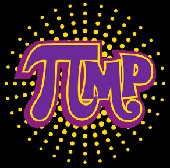
|
Explosives Made by Nitration
by lpumsun
NOTICE: TO ALL CONCERNED Certain text files and messages contained on this site deal with activities and devices which would be in violation of various Federal, State, and local laws if actually carried out or constructed. The webmasters of this site do not advocate the breaking of any law. Our text files and message bases are for informational purposes only. We recommend that you contact your local law enforcement officials before undertaking any project based upon any information obtained from this or any other web site. We do not guarantee that any of the information contained on this system is correct, workable, or factual. We are not responsible for, nor do we assume any liability for, damages resulting from the use of any information on this site.
NITROGLYCERIN-- Nitroglycerin is the ingredient which, from the beginning of the dynamite industry, has given such explosives their characteristics high velocity, as distinguished from low velocity black powder. Nitroglycerin is obtained by the action of nitric acid on glycerin. While sulphuric acid is also used in the process of making nitroglycerin. In carrying out the nitration, the proper amount of mixed acid is introduced into the nitrating vessel. Special coils are introduced to keep the acid cool. With agitation glycerin is introduced into the vessel at such a rate that the rise in temperature is only moderate. The temp range is maintained between 50 to 37 F (10-3 C) but the nitroglycerin itself freezes at 55 F, but conducting out this at lower temperature is for safety part. Nitroglycerin resembles glycerin in appearance, and is a white to yellowish, viscous liquid. It needs emphasized that the manufacture of nitroglycerin is a hazardous operation, and should not be attempted by inexperienced persons. And further more washing of nitroglycerin is taken out to remove the excess acids. In, recent years continuous process of nitration, separation, and washing of nitroglycerin have been taken up by new methods.
NITROCELLULOSE-- The nitration cellulose follows the same principle as in the case of glycerin, namely the treatment of cellulose with nitric acid and the introduction of nitro groups in place of hydrogen atoms. Nitrocellulose like nitroglycerin is misnamed and is actually nitric ester, cellulose nitrate. In the nitration of cellulose, on the other hand, a mixture of cellulose nitrate may be obtained, varying nitrogen content and solubility in organic solvents, depending on the composition of the mixed acids and conditions of nitration.
In the process of nitration, the purified cellulose is immersed in a mixed acid, having, for example, the approximate composition 63% sulphuric acid, 22% nitric acid, and 15% water. It is common to nitrate 14kg of cotton as one charge for about 30 minutes, with agitation, using about 740kg of mixed acid and maintaining the temperature of 30-35 C. then the whole nitrated cellulose is drowned in excess of water, and thus cleaned, for excess acids.
The ' cotton gun ' is the same thing containing mixed acids, sulphuric and nitric acids, for nitration. And followed by boiling it and it's washing. They are highly inflammable and are used for detonators because of their high velocities. They are also used for commercial uses of mining and other explosive purposes.
TRINITROTLUENE-- In the case of nitroglycerin and nitrocellulose, nitration is one-step process, all the acid and the material for nitration being introduced during one operation. With TRINITROTLUENE (TNT), either a two step or a three step process is used, the former separating out the mono-nitro compound first, then going through the bi and tri stages in one step In the preparation of TNT in several nitration steps, stronger acids and higher temperatures are used during the contact of mixed acids and nit ratable material as the highest stages of nitration are carried out. In one of the process, the acid composition for the final nitration step is approximately 79.5% sulphuric acid, 17.8% nitric acid, and 2.7% of water
OTHER NITRATION PROCEDURES-- In the three examples of nitration, mixtures of nitric and sulphuric acids have been employed as nitration medium. While the nitric acid is always the active reactant, various other procedures are frequently followed.
|

|

